The United States was seen by Britain and France as a giant factory that could aid them in production of military hardware back before the First World War. That is what ended up happening, although American produced vehicles did not arrive in time to fight. However, during WWII, the expectations of America's European allies were met, especially when it came to tanks. However, the trans-Atlantic tank factories didn't work like the British expected them to. Instead of building British tanks under license, the Americans provided their own designs. This article describes the General Lee and General Grant tanks, the first mass produced American medium tanks that were used by the British army.
Foreign and domestic
The first country to use American weapons in WWII, primarily aircraft, was France. 7000 American trucks also laboured on the ground. After the fall of France, the American 'center of gravity' shifted towards supplies for Britain. The British had a very serious problem at the moment: with the defeat of the British Expeditionary Force, the vast majority of tanks were lost in France, which resulted in a critical shortage of armour. The British were not sitting idle, but the rate of production was not particularly impressive for wartime.
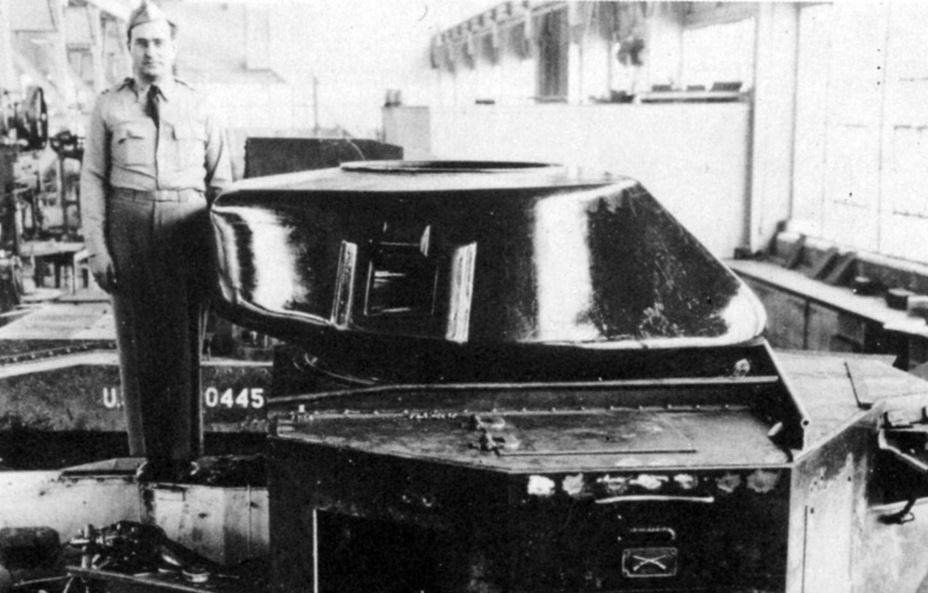
The solution was to be production of tanks abroad, like during WWI. Canada had the most developed industry out of all the Commonwealth nations, and production of the Valentine tank was organized there. However, it was obvious that the United States were to be the main production base. The French were also planning to organize production of the Char B1 bis there. However, these plans were never realized, since France quickly lost the war.
The British were planning on suggesting the Infantry Tank Mk.IIA for production under license. This was the best British tank at the time, but domestic industry was having significant difficulties with its production. Only 152 tanks were built from the fall of 1939 to July of 1940. The rate of production increased slightly in the second half of the year, but not by much. 1 tank per day was not a lot for wartime, especially if 6 companies were working on it. It's not surprising that the War Office turned to the American government with the proposal to organize production of the Infantry Tank Mk.IIA. A delegation was sent for negotiations, lead by Michael Devar, the head of British Timken Ltd and accompanied by L.E. Carr, a tank specialist from the Department of Mechanization.

An attempt to organize production of the Infantry Tank Mk.IIA in the USA was unsuccessful. Trials of the tank at Aberdeen in early September of 1940 disappointed the Americans. The tank was slow, put in motion by a pair of weak bus engines, and had poor armament. Its only advantage was thick armour.
The fact that production of the Medium Tank M3 recently started made the Infantry Tank Mk.IIA an even weaker prospect. An agreement was signed with Chrysler Corporation for production of 1000 of these tanks. These tanks would be built at the new Detroit arsenal, construction of which began on September 9th. It had slightly thinner armour than the Infantry Tank Mk.IIA, but surpassed it in all other ways. It's not surprising that the Americans rejected the British infantry tank.

As a result, the British Tank Mission could only agree to purchase American tanks. One of the mission's objectives was the adaptation of American tanks to British standards. Carr set out on this task. It was impossible to radically alter the tank, but the vehicle did undergo some changes. For one, the British were categorically opposed to the design of the turret. It was too small, and its commander's cupola was poorly designed. The limited amount of space was inefficiently used. Carr didn't want to settle and designed his own turret. It was also cast, but was significantly different from the initial design. The cupola was removed, and replaced with a hatch with a periscopic observation device. A turret bustle was introduced, and the radio was moved there. Since the Medium Tank M3 was not yet ready, Carr experimented with a Medium Tank M2A1.
Generals' names
The first contract for a British variant of the Medium Tank M3 was awarded to Baldwin Locomotive Works. The same company received an order for M3 tanks for the American army. The factory was to build 685 tanks for the British. Later, an order for 1000 more tanks was made. It was split in half: 500 tanks for Pullman-Standard Car Manufacturing Company, 500 for Pressed Steel Car Company, which also worked on train cars. The first Medium Tank M3 that was built to British specifications was completed by Pressed Steel on July 15th, 1941.

The British did not stop there. The war promised to be a long one, and British manufacturing capacity was not limitless. Some new British designs, such as the Cruiser Tank Mk.V (Covenanter) proved controversial. The planned output of medium tanks to equip the British and American armies was so high that Tukhachevskiy himself would have been jealous. The reality, of course, was different. Far fewer than 70,000 medium tanks were built in 1942-43, but the output was impressive nevertheless.
Due to the increase in demand, the Americans supplied the British with both variants of the Medium Tank M3. However, these vehicles were still different from American ones, since they were equipped with British pattern Wireless Set No.19 radios.

Supplies of both variants of the Medium Tank M3 to Britain began towards the end of 1941. There were some changes to the nomenclature of British tanks by that point. New names began appearing in August, and were officially approved on September 22nd. The problem was that the existing system of indexes became too complex. Because of this, the British migrated to using names instead. For instance, the Infantry Tank Mk.IIA* became the Matilda III. As for American tanks, they received names of American generals.
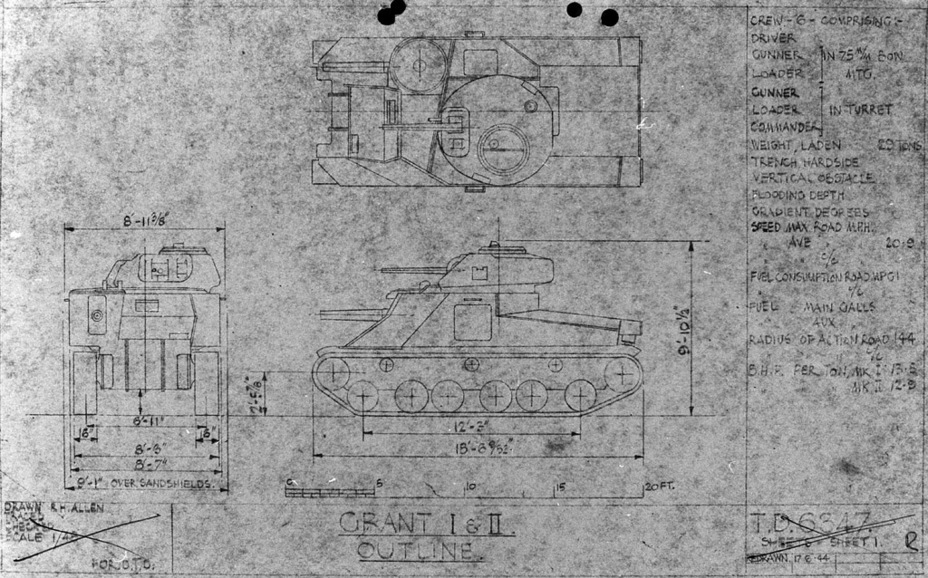
The choice of names for the Medium Tank M3 was driven by British humour. The American version of the tank was called General Lee I, in honour of General Robert Lee, the commander of the Confederate army during the American Civil War. As for the British version, it was named General Grant I, after the commander of the Union army, which achieved victory over Lee. Later, closer to the fall of 1942, the names were shortened to Lee I and Grant I. The names 'M3 Lee' or 'M3 Grant' were never used and exist as a result of inaccurate analysis by some historians.

As mentioned above, real supplies of the Lee I and Grant I began towards the end of 1941. Monthly shipments passed the 200 tank mark by the end of the year, and were up to 400 tanks in April. Shipments for May remained at that level, and then began to radically decrease. Production of the Medium Tank M4A1 replaced the Medium Tank M3. The British eagerly awaited this new tank, named General Sherman II, or simply Sherman II. The last of the Lee I/Grant I tanks reached Great Britain in July of 1942. Overall, 2653 tanks of both types were received.

Shipments of the Medium Tank M3 did not end there. One of the services that Carr rendered was help in designing a power plant that used two GM 6-71 diesel engines, the result of which was the General Motors 6046. It was used by the Medium Tank M3A3 and Medium Tank M3A5, indexed Lee V and Grant II respectively. The M3A3 was built as an ordinary American tank, while the M3A5 underwent modernization similar to the Grant I. These modernized tanks were built by Baldwin Locomotive Works. In total, the British received 47 Lee V and 185 Grant II. It's likely that these were the tanks sent across the ocean in March of 1943.

The registration numbers turned out to be quite interesting. Since the initial prediction was for a much greater number of tanks than were built, a much larger range of numbers was reserved. 36 Lee tanks (T.22668-T.22703) were followed by 1686 Grant tanks (T.23504-T.25189) and 1214 Lee tanks (T.25290-T.26503). The amount of reserved numbers already surpassed the real amount of shipments, but that was not the end. 650 Grant tanks followed (T.29141-T.29790), 550 Lee/Grant (T.39231-T.29780), 9 Lee tanks (T.74594-T.74502), 100 Lee/Grant (T.78847-T.78946), 2465 Lee tanks (T.138946-T.141410) and then a block of 791 Lee tanks (T.144100-T.144890). The reserved space allows one to estimate the planned amount of production. The appearance of the Sherman, a far superior tank, put a stop to them.
No worse than British tanks
The appearance of the Lee I and Grant I coincided with a difficult time for British tankers. Despite a numerical advantage, British tanks began to fell behind the tanks of the Afrika Korps starting with the second half of 1041. Their 2-pounder gun was insufficient against German tanks equipped with 50 mm of armour. The reliability of most British tanks left much to be desired, and those that were sufficiently reliable and had good enough armour (Matilda and Valentine) were too slow. This was the reason why the British did not perform too well in North Africa.

British documents show that the tanks were classified as Cruisers. This is partially due to superior mobility compared to infantry tanks. The American tanks were not as fast as the Crusader, but the difference was not that great. The Crusader's top speed was only 3 kph higher, but the American tanks surpassed it in armour and armament, and, more importantly, reliability. Another interesting fact can be gleamed from photographs: the Lee and Grant never received the 75 mm M3 gun, and stabilizers were rarely installed.

Like other British tanks that fought in the desert, the Lee and Grant received some modifications. They arrived in Africa in their initial configuration and were slowly changed over time to suit the needs of the British. By late 1941, tanks were equipped with extended fenders with additional sand shields. Later tanks were also equipped with mud shields in between bogeys. Additional fuel tanks were also added.
Another improvement that was added in the fall of 1941 were improved tracks, named Rubber Standard, but better known by their catalogue number WE210. Unlike T41 tracks, they had grousers, and were also reinforced, which improved their reliability in the desert. Despite all these improvements, the tanks were still equipped with additional stowage in the desert. This was a pretty common phenomenon. British tanks underwent similar modifications.

The first Grant I tanks arrived in Egypt by January 31st, 1942. Before the tanks went into battle, their crews were thoroughly trained. Unlike Stuart tanks, which differed little from British models, the American medium tanks required extensive training. The concept of a tank with its main gun in the hull demanded some changes to how the tank behaved on the battlefield. The 37 mm gun in the turret caused few issues, but the 75 mm M2 gun in the hull was not easy to use. Its traverse range was limited, and the sights took some getting used to. Unlike the weapons of British tanks and the Light Tank M3, the M2 gun used a periscopic sight. The sighting grid was an unfamiliar sight, and, what's worse, only had markings for AP shells. A lack of a scale for HE shells was a traditional shortcoming of American tank sights.
The presence of HE shells was already a blessing, but there were some issues with them. Some Russian authors like to draw attention to Tsarist stock used by the Red Army. The same situation was not uncommon in other armies of the world. The British were no exception. The M2 used ammunition from the French Canon de campagne de 75 mm modèle 1897. The British had extensive stocks of ammunition for it since WWI. The issue was that the shells didn't get any newer with time. Accidents during training with this ammunition were common.
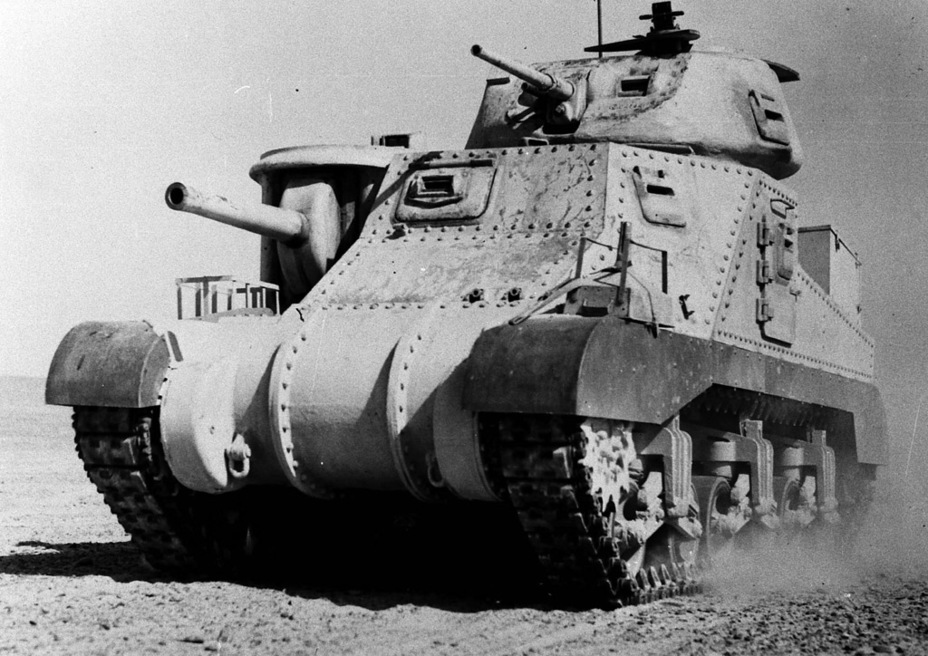
AP shells were a separate issue. All Grant I tanks were equipped with 75 mm M2 guns with similar ballistics to the Soviet L-11 76.2 mm gun. This gun was better than the 2-pounder, but should not be overestimated. The M72 shell could penetrate 52 mm of armour from a kilometer away. This was not so bad, but the British could have used better performance. Fate smiled upon the British: among German stocks captured in 1942 were 7.5 cm Pz.Gr. shells used by PzIV tanks. The shell with a tracer and a ballistic cap piqued the interest of Australian Major Norty. He proposed to implement a conversion, removing the German shell from its casing and inserting it into an American one. After a consultation with Major Jarrett, the American ordnance advisor, trials were performed, to excellent results. Another bonus was that the German shell had a bursting charge, while the American round was just a solid shot.
This triggered a mass conversion of German ammunition, which continued through the spring of 1942. 17,000 rounds were converted in total. The Americans developed their own shell based on the German one, the M61. Penetration from 1000 meters improved to 65 mm. These shells appeared in the summer of 1942. Before then, usage of converted German ammunition was widespread.

Service in the desert brought many surprises with it. For instance, the rubber-metallic tracks wore down quickly. The WE210 track links were more long-lived, but even they did not reduce the need for fully metallic track links. The result was the T37 and T47 track link, but they did not make it to the Lee/Grant.
Another issue with American tanks were their engines. In addition to their need for high quality gasoline, there were some reliability issues. Some instances of burning up after only 25 hours of use were recorded. The issue turned out to be with poorly working air filters and incorrect usage. The solution was quickly found by replacing the filters with better ones and improved training.

British leadership initially considered the use of General Grant I tanks to be temporary. In February of 1942, Major General Galloway predicted that both the American tanks and the Valentine would be replaced by the Crusader III. Sir Galloway turned out to be an optimist. The reliability of the Crusader raised many questions. Despite all the growing pains of the American tank, the time spent between refurbishments was significantly longer. In addition, the Crusader had no HE shells. Only the Crusader CS, armed with a 76 mm howitzer, had them, but not AP shells. The combat effectiveness of the Grant and Lee tanks was much higher.
As a result, the strategy of American tanks in combat changed by late February. The 22nd Brigade replaced their Stuart tanks with refurbished Crusader I and II tanks, and the Grant I became their main tank. The British still hoped that the Grant I will be replaced by the Crusader III equipped with a 6-pounder gun.
The British plans were changed after the first use of the Grant I in battle. On May 26th, 1942, the German Afrika Korps and its accompanying Italian allies began Operation Venice. At that point, the British 1st and 7th Armoured Divisions had 167 Grant I tanks. Battles erupted around Bir Hakeim. The battle, known to the British as the Battle of Gazala, resulted in their loss. The defeated British army retreated to El Alamein. The garrison of Tobruk surrendered on June 21st.
The analysis of the battles revealed interesting results. The Grant I was slower than the Crusader, as expected. The narrow range of the 75 mm gun was also criticized. However, the Grant I had a lot more advantages. The thick armour of the American tank was much more reliable, and German 50 mm guns could only penetrate it at close range. Most PzIII tanks used by the Afrika Korps were equipped with 5 cm L/42 guns. The Crusader was vulnerable to these weapons from a much greater range.
The power of the 75 mm gun was deemed good, and the 37 mm M6 gun also had superior penetration to the British 2-pounder. The American tank that was considered a temporary measure in early 1942 turned out to be the best tank the British had at the time. The Battle of Gazala was the combat debut for American tankers in North Africa. Three of their crews fought in the 1st Royal Tank Regiment, claiming 9 enemy tanks.
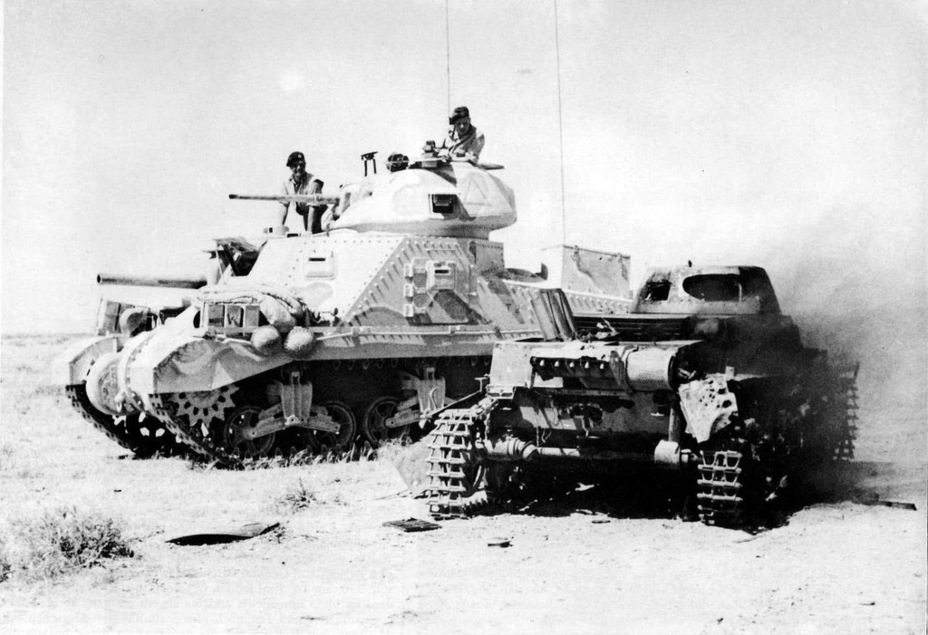
After the fighting at Gazala, the British decided to send more American tanks to Africa, including the Lee I. 170 tanks of this type fought at El Alamein. The Crusader III finally turned up on the battlefield, but the rearmament with domestic vehicles was not to be. The Sherman II made its debut in this battle as well. This tank retained the best features of the Lee and Grant, but also had the advantage of a 75 mm gun in a fully rotating turret. The new American tanks triggered a wide range of position responses from the British, if not outright joy.
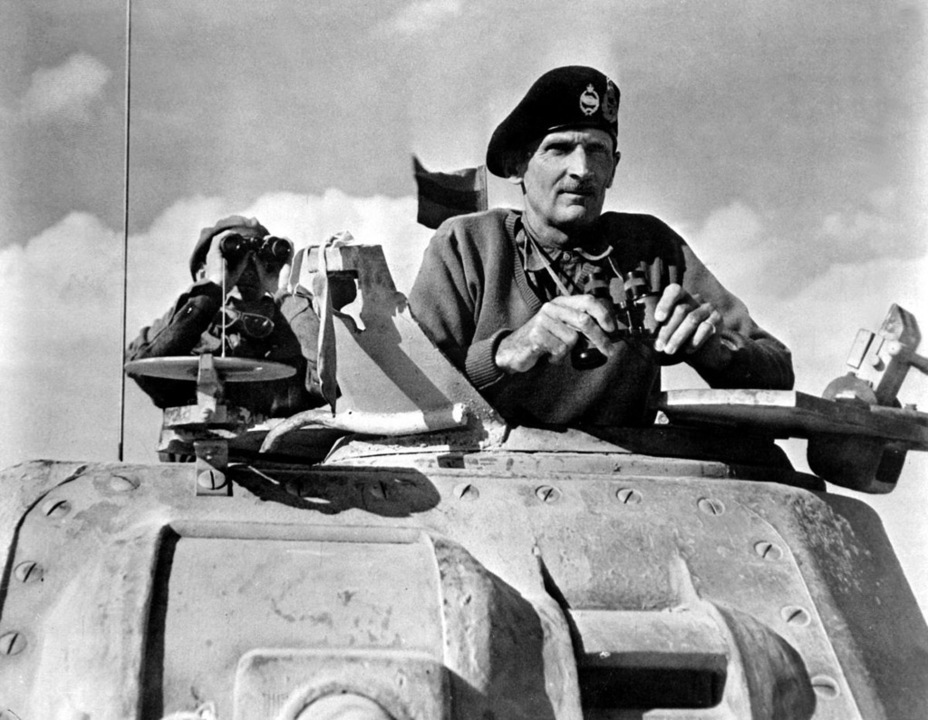
The Battle of El Alamein was the swan song for a large number of tanks, including the Lee/Grant. They were gradually replaced with arriving Shermans. There were almost no tanks of this type by the landings in Italy. However, some remained. This had to do with the large internal volume of the tank that made it suitable for conversion into command tanks. The 75 mm gun was removed and a fake barrel was put in its place. The fighting compartment was also changed. These tanks served for a lot longer.
The best known Grant I command tank was named Monty. This was the personal tank of General Montgomery, which he used starting with El Alamein. The general continued to use it during the Italian campaign. This tank survives to this day in the Imperial War Museum in Duxford.

Some command tanks were converted towards the start of the Italian campaign. Since the Sherman became the main tank of the British army, the tanks had to look like them. The sponson and its bulge were removed. The turret was altered, and a dummy 75 mm gun barrel was added to it. These tanks served in Italy until the end of the war.

Other British versions of the Grant I also deserve a mention, primarily the CDL Tank M3. This vehicle was designed as a part of the Canal Defense Light program. It carried a number of changes to allow fighting during the night. A powerful spotlight replaced the turret. Initially this spotlight was used on the Matilda tank, but there was an issue. The tank was designed to resist a German invasion, but its armament consisted of only one BESA machinegun.

The installation of a turret with this spotlight into the Medium Tank M3 was a much more rational choice. Requirements for the CDL Tank M3 were drawn up in May of 1941. This tank retained its primary armament and could therefore fight the enemy on its own. The first tanks were ready by the end of 1941, and these were the first American tanks to be adopted by the British army. The names Lee and Grant did not apply to them. Even in documents dated 1944 they are still called CDL Tank M3.
According to research by John Fuller, 1850 Medium Tanks M3 were converted. British and American companies performed the conversions. There was a difference between the two: American-built tanks had Browning M1919A4 machineguns in the turret.

While the British stopped using Lee and Grant tanks by the spring of 1943, the situation on the other side of the world was different. The Australians put their own tank into production, the AC 1 Sentinel. It is often called a variant of the Medium Tank M3, but it is a different vehicle, although similar. Nearly all Grant II and Lee V (232 tanks from 234) were sent to Australia. 266 Grant I and 239 Lee I tanks also ended up there. 20 more drowned on the way, along with their ships.
The arrival of these tanks was met with enthusiasm. The combat effectiveness of these tanks was much higher than that of the Matilda, especially in terms of firepower. Nevertheless, these tanks were included into the strategic reserve in case of a Japanese invasion. Many Lee tanks had their cupolas removed and replaced with a hatch. A large number of Lee/Grant tanks were used in agriculture after the war, which explains the large amount of well preserved specimens in Australia.
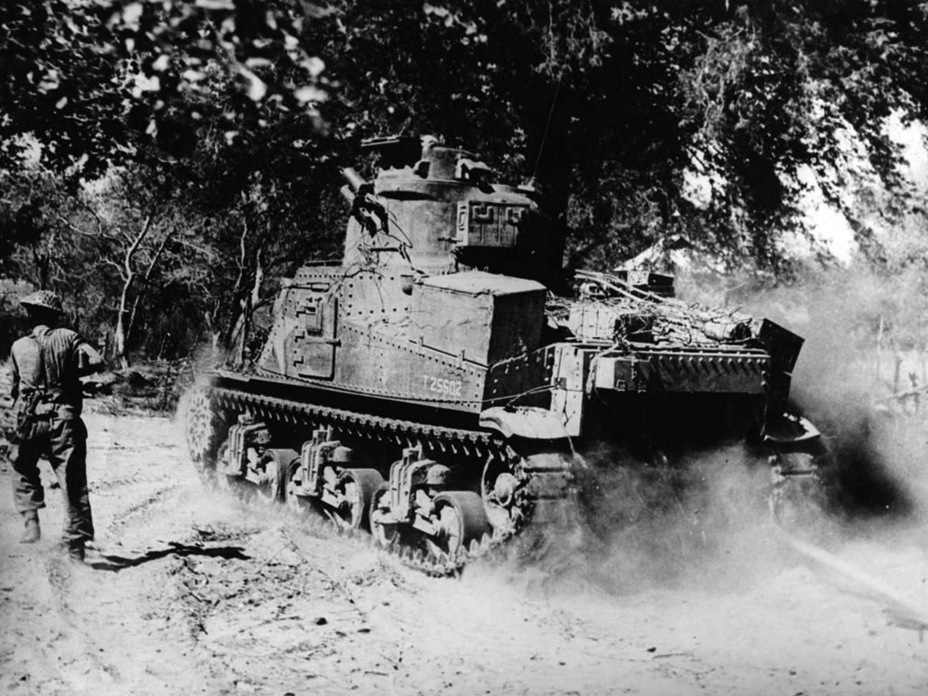
Another theater of war where the Lee served for a long time was Burma. The tank was good enough to keep fighting the Japanese. It's not surprising that these tanks remained in service until the very end of the war. Even though the Shermans began arriving in late 1942, their predecessor continued to fight, at least in secondary operations. This is evidence that the Lee/Grant was an adequate vehicle from the point of view of combat performance. At the very least, they were better than British tanks of the same class, which, aside from the Matilda and Valentine, vanished from the battlefield in the summer of 1943.
Translated by Peter Samsonov. Read more interesting tank articles on his blog Tank Archives.
Sources:
- National Archives and Records Administration;
- Sherman: A History of the American Medium Tank, R.P. Hunnicutt, Presidio Press, 1994;
- Author's photo archive.







